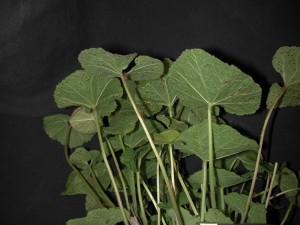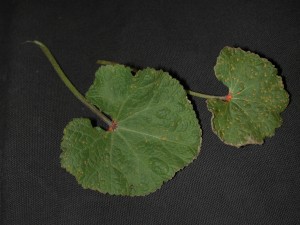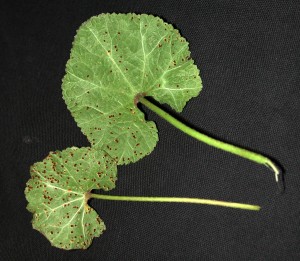Hollyhock rust – Puccinia malvacearum
Pathogen: Puccinia malvacearum
Hosts: Alcea, Althaea, Lavatera, and Malva.
Symptoms: Small brown spots develop on the underside of foliage. Raised, bright yellow or orange pustules are visible on the upper leaf surface. When disease is severe large portions of the foliage are killed.
Spread: Spores can over winter on diseased plant tissues infecting new foliage the following year. Spores are also produced on susceptible weeds these can subsequently infect and cause disease on hollyhocks. Spores are wind dispersed.
Management: Disease control on seedlings is especially important. Fungicide applications at regular intervals are necessary when disease is severe. Plants should be cut back as soon as flowering is done. Plant debris should be removed and destroyed, it should not be composted. Several weeds (in the mallow family) are also susceptible; these weeds should be controlled to limit inoculum in the growing area.






 Print
Print Email
Email